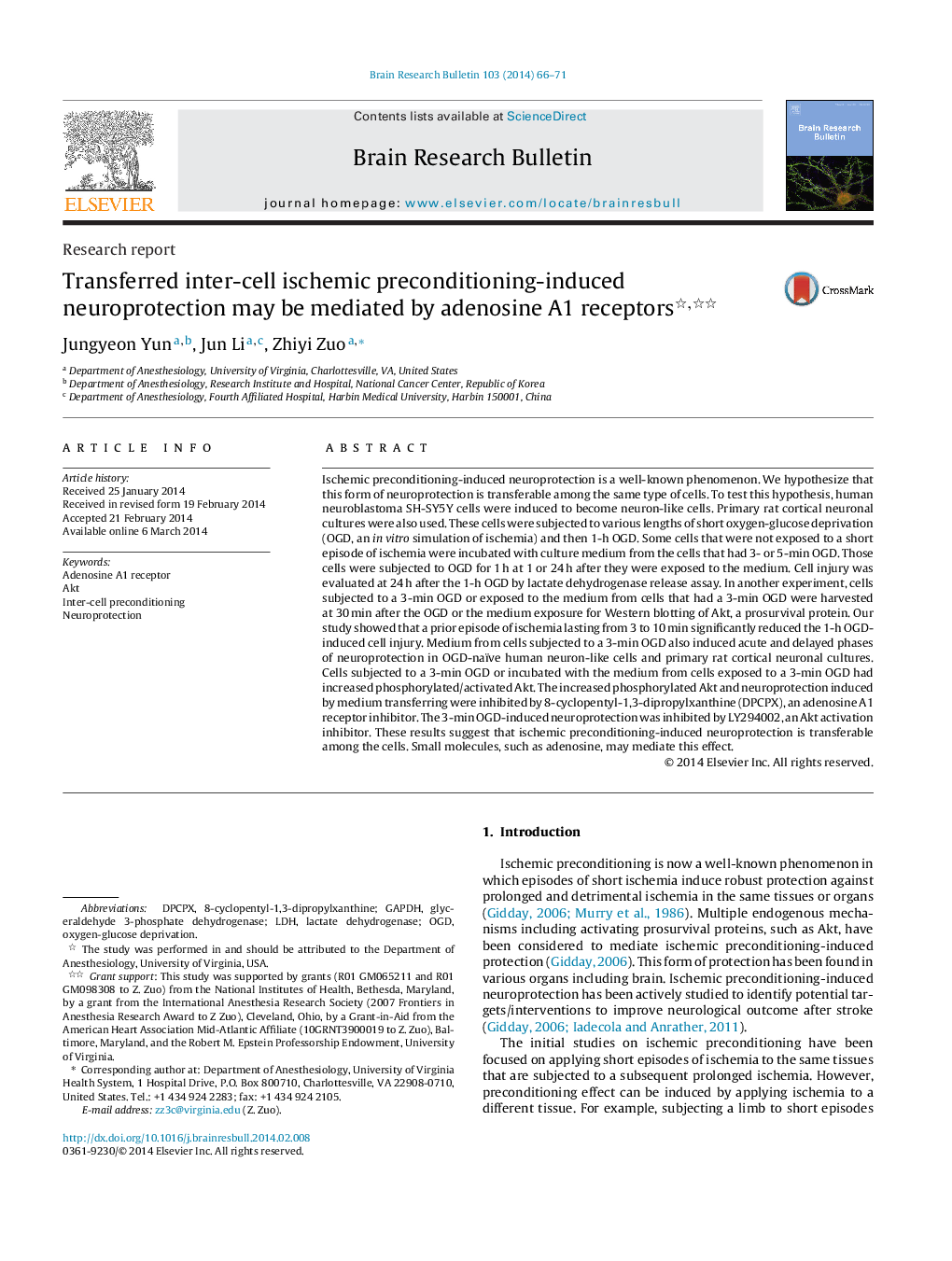| Article ID | Journal | Published Year | Pages | File Type |
|---|---|---|---|---|
| 4318839 | Brain Research Bulletin | 2014 | 6 Pages |
Abstract
Ischemic preconditioning-induced neuroprotection is a well-known phenomenon. We hypothesize that this form of neuroprotection is transferable among the same type of cells. To test this hypothesis, human neuroblastoma SH-SY5Y cells were induced to become neuron-like cells. Primary rat cortical neuronal cultures were also used. These cells were subjected to various lengths of short oxygen-glucose deprivation (OGD, an in vitro simulation of ischemia) and then 1-h OGD. Some cells that were not exposed to a short episode of ischemia were incubated with culture medium from the cells that had 3- or 5-min OGD. Those cells were subjected to OGD for 1Â h at 1 or 24Â h after they were exposed to the medium. Cell injury was evaluated at 24Â h after the 1-h OGD by lactate dehydrogenase release assay. In another experiment, cells subjected to a 3-min OGD or exposed to the medium from cells that had a 3-min OGD were harvested at 30Â min after the OGD or the medium exposure for Western blotting of Akt, a prosurvival protein. Our study showed that a prior episode of ischemia lasting from 3 to 10Â min significantly reduced the 1-h OGD-induced cell injury. Medium from cells subjected to a 3-min OGD also induced acute and delayed phases of neuroprotection in OGD-naïve human neuron-like cells and primary rat cortical neuronal cultures. Cells subjected to a 3-min OGD or incubated with the medium from cells exposed to a 3-min OGD had increased phosphorylated/activated Akt. The increased phosphorylated Akt and neuroprotection induced by medium transferring were inhibited by 8-cyclopentyl-1,3-dipropylxanthine (DPCPX), an adenosine A1 receptor inhibitor. The 3-min OGD-induced neuroprotection was inhibited by LY294002, an Akt activation inhibitor. These results suggest that ischemic preconditioning-induced neuroprotection is transferable among the cells. Small molecules, such as adenosine, may mediate this effect.
Keywords
Related Topics
Life Sciences
Neuroscience
Cellular and Molecular Neuroscience
Authors
Jungyeon Yun, Jun Li, Zhiyi Zuo,
